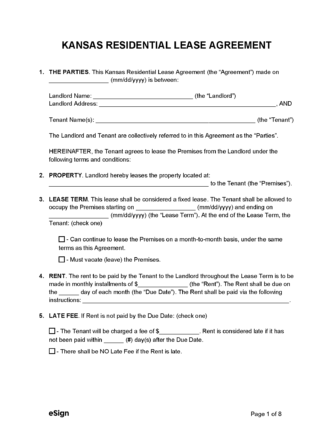Lease Agreements: By Type (6)
 Standard (1-year) Lease Agreement – Allows the landlord and tenant to agree upon a rental arrangement that will continue until the end of a one-year term. Standard (1-year) Lease Agreement – Allows the landlord and tenant to agree upon a rental arrangement that will continue until the end of a one-year term.
Download: PDF, Word (.docx), OpenDocument |
Commercial Lease Agreement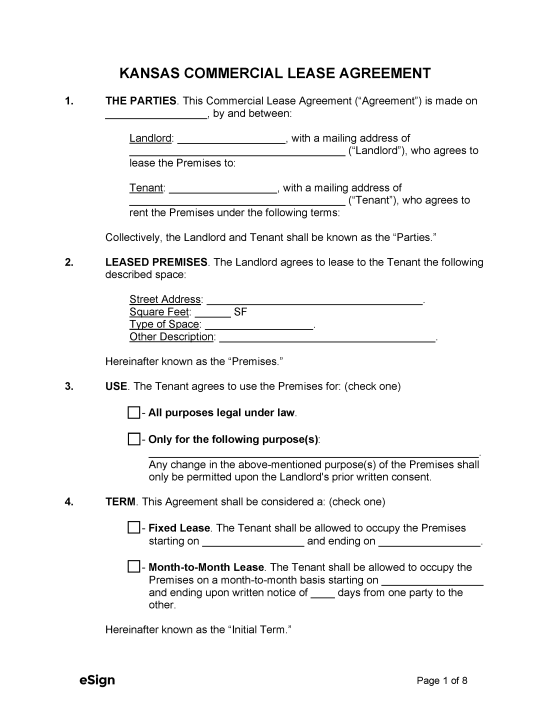 – Used to rent commercial space to a business entity or individual. – Used to rent commercial space to a business entity or individual.
Download: PDF, Word (.docx), OpenDocument |
 Month-to-Month Lease Agreement – Used by landlords who want to rent out their property on a month-to-month basis. Month-to-Month Lease Agreement – Used by landlords who want to rent out their property on a month-to-month basis.
Download: PDF, Word (.docx), OpenDocument |
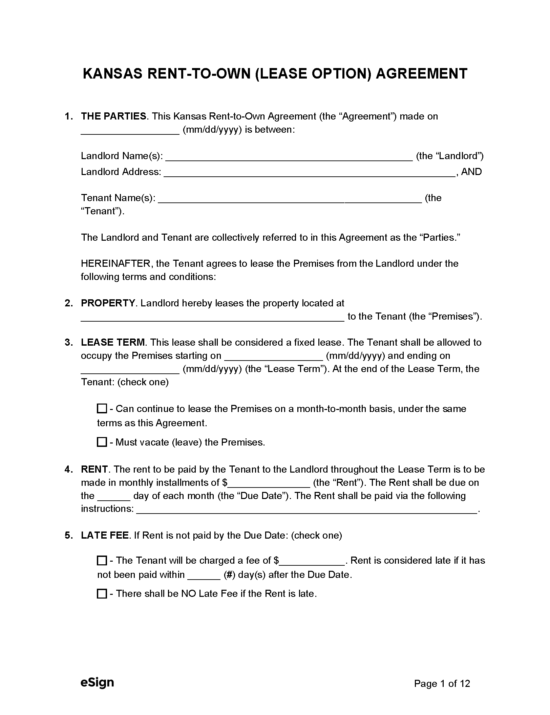 Rent-to-Own Agreement (Lease Option) – For tenants interested in purchasing the rental property after living in the unit as a tenant for a certain period. Rent-to-Own Agreement (Lease Option) – For tenants interested in purchasing the rental property after living in the unit as a tenant for a certain period.
Download: PDF, Word (.docx), OpenDocument |
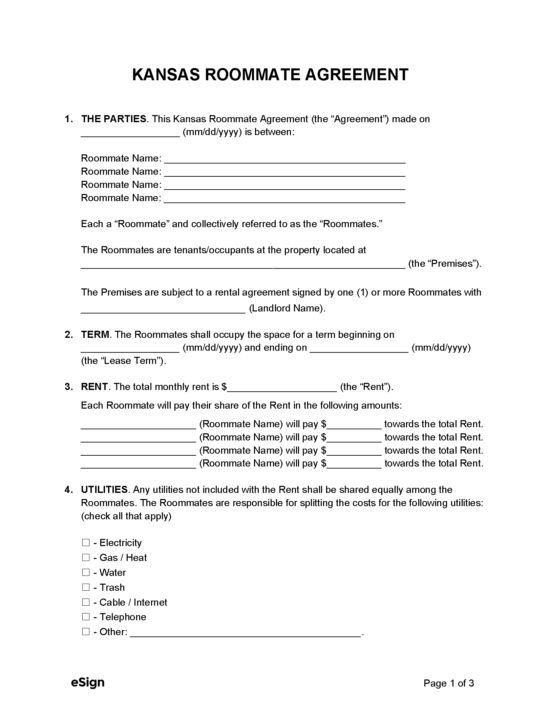 Roommate Agreement – For individuals who are living together and wish to create a written agreement that specifies their rights, duties, and obligations. Roommate Agreement – For individuals who are living together and wish to create a written agreement that specifies their rights, duties, and obligations.
Download: PDF, Word (.docx), OpenDocument |
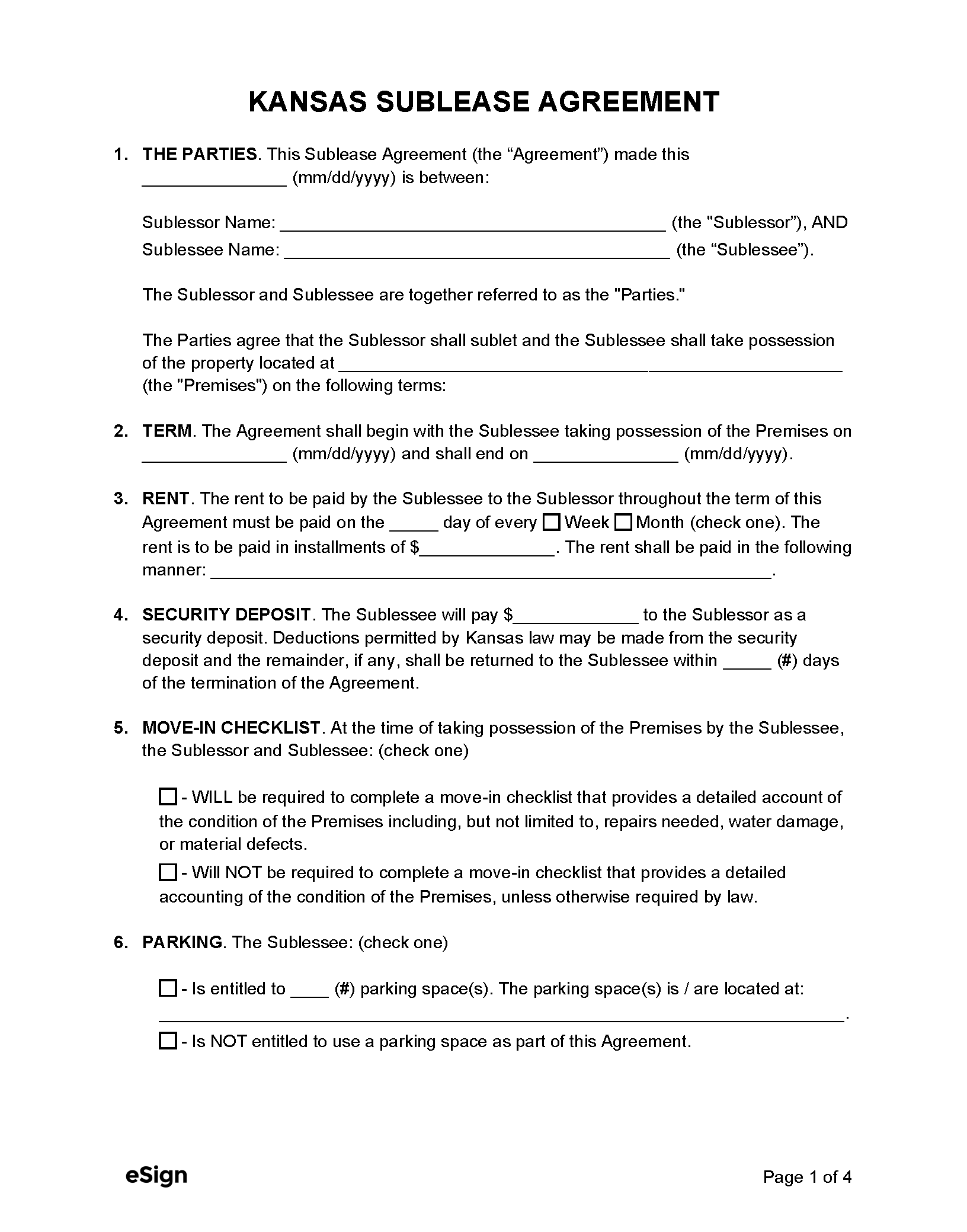 Sublease Agreement – Used by a tenant to rent the entirety or a part of their living space to a subtenant, with permission from the landlord. Sublease Agreement – Used by a tenant to rent the entirety or a part of their living space to a subtenant, with permission from the landlord.
Download: PDF, Word (.docx), OpenDocument |
Required Disclosures (3)
- Identification – The landlord is required to disclose in writing the names and addresses of all individuals authorized to manage the premises and serve notices and demands upon the tenant.[1]
- Inventory and Condition Report – Within five days of moving in, the tenant must be given a report of the property’s condition and any included furnishings or appliances.[2]
- Lead-Based Paint Disclosure (PDF) – Landlords will need to complete this disclosure form and give it to prospective tenants of residences built before 1978 to inform them of the possible presence of lead-based paint on the property.[3]
Security Deposits
Maximum Amount ($) – Landlords can charge a maximum of 1 month’s rent for unfurnished units and 1.5 month’s rent for furnished.[4]
- If the tenant has pets, an additional half month’s rent can be charged.
Collecting Interest – Interest doesn’t need to be collected on security deposits.
Returning to Tenant – The security deposit must be returned to the tenant within 30 days of the tenancy termination date (14 days if the landlord made any deductions).[5]
Itemized List Required? – Yes, if the landlord makes any deductions to the tenant’s security deposit, they must provide a written notice listing and explaining the retained amounts.
Separate Bank Account? – No, the tenant’s deposit doesn’t need to be kept in a separate account.
Landlord’s Access
General Access – The landlord must provide reasonable notice before entering the premises.[6]
Immediate Access – The landlord may enter the premises without notice as long as it is for emergency purposes.[7]
Rent Payments
Grace Period – There’s no grace period for rent payments.[8]
Maximum Late Fees ($) – State law doesn’t set a limit on late fees.
Bad Check (NSF) Fee – The landlord can demand a $30 penalty if a tenant’s check bounces.[9]
Withholding Rent – Tenants aren’t permitted to withhold rent for damages and repairs.
Breaking a Lease
Non-Payment of Rent – When tenants fail to pay their rent, landlords must give 3 days’ notice (for leases under 3 months) or 10 days’ notice (for leases over 3 months) before evicting them.[10]
give 3 days’ notice (for leases under 3 months) or 10 days’ notice (for leases over 3 months) before
Non-Compliance – Tenants who break the terms of their lease must be given 14 days’ notice to correct their violation.[11]
Lockouts – The tenant can seek damages of up to 1.5 months’ periodic rent or 1.5 times actual damages if the landlord doesn’t allow them to access their rental unit.[12]
Leaving Before the End Date – If the lease specifies that the tenant must give notice before an absence of seven or more days, the landlord can hold them liable for any damages if proper notice isn’t given.[13]
Lease Termination
Month-to-Month Tenancy – When terminating a month-to-month tenancy, 30 days’ notice must be given to the other party.[14]
Unclaimed Property – Any belongings a tenant leaves behind can be claimed by the landlord after storing them for 30 days.[15]
